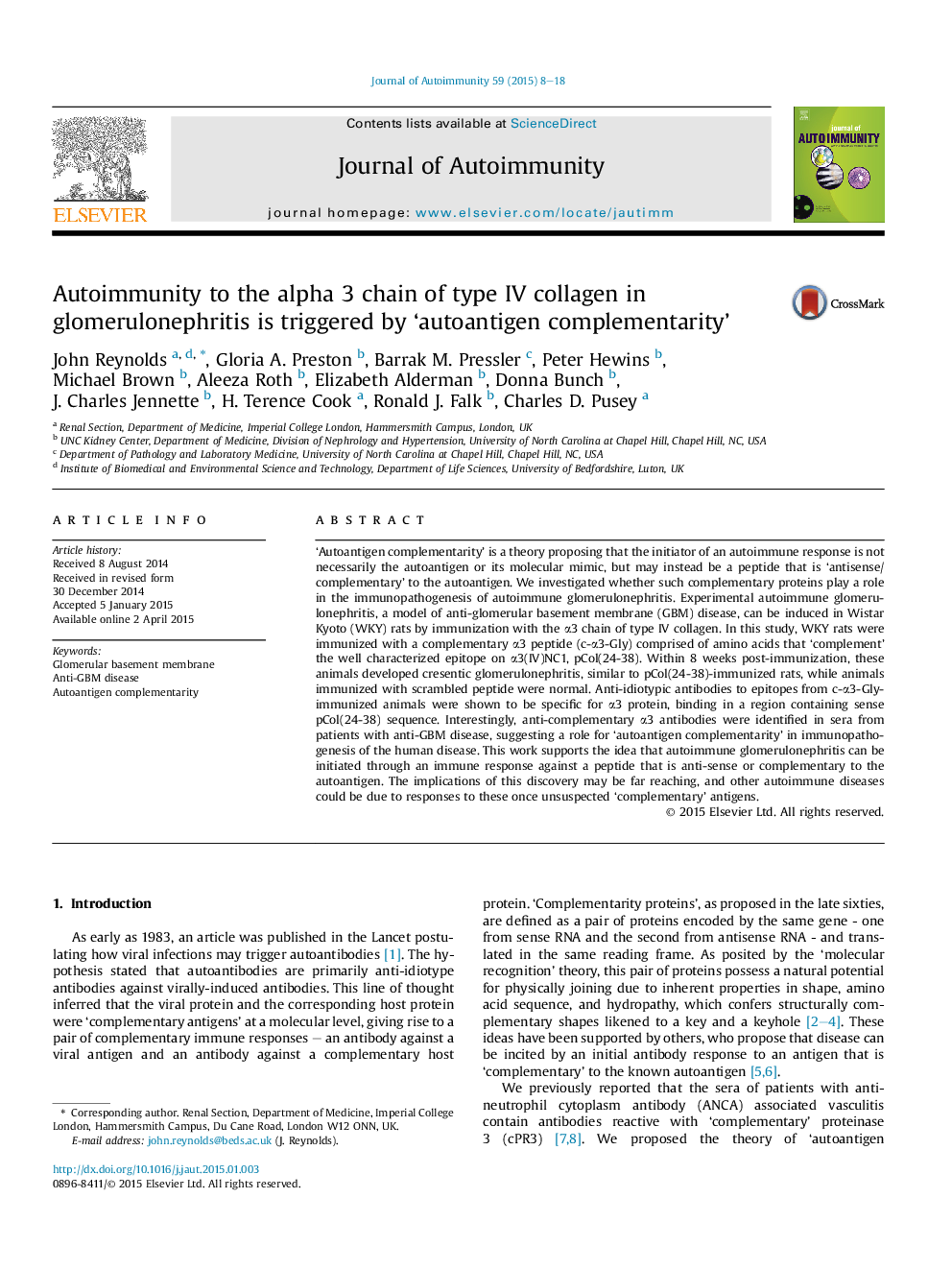| Article ID | Journal | Published Year | Pages | File Type |
|---|---|---|---|---|
| 3367719 | Journal of Autoimmunity | 2015 | 11 Pages |
‘Autoantigen complementarity’ is a theory proposing that the initiator of an autoimmune response is not necessarily the autoantigen or its molecular mimic, but may instead be a peptide that is ‘antisense/complementary’ to the autoantigen. We investigated whether such complementary proteins play a role in the immunopathogenesis of autoimmune glomerulonephritis. Experimental autoimmune glomerulonephritis, a model of anti-glomerular basement membrane (GBM) disease, can be induced in Wistar Kyoto (WKY) rats by immunization with the α3 chain of type IV collagen. In this study, WKY rats were immunized with a complementary α3 peptide (c-α3-Gly) comprised of amino acids that ‘complement’ the well characterized epitope on α3(IV)NC1, pCol(24-38). Within 8 weeks post-immunization, these animals developed cresentic glomerulonephritis, similar to pCol(24-38)-immunized rats, while animals immunized with scrambled peptide were normal. Anti-idiotypic antibodies to epitopes from c-α3-Gly-immunized animals were shown to be specific for α3 protein, binding in a region containing sense pCol(24-38) sequence. Interestingly, anti-complementary α3 antibodies were identified in sera from patients with anti-GBM disease, suggesting a role for ‘autoantigen complementarity’ in immunopathogenesis of the human disease. This work supports the idea that autoimmune glomerulonephritis can be initiated through an immune response against a peptide that is anti-sense or complementary to the autoantigen. The implications of this discovery may be far reaching, and other autoimmune diseases could be due to responses to these once unsuspected ‘complementary’ antigens.
